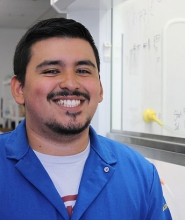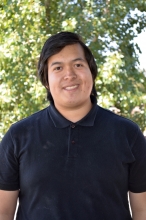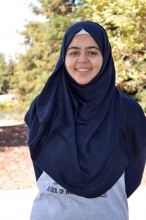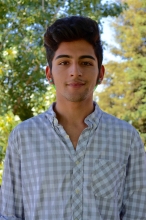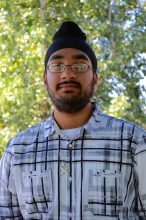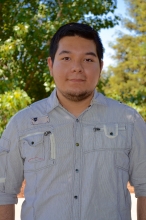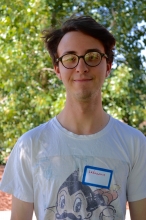Ramiro Barraza
During Ramiro Barraza's time in CAMP, he was a third year undergraduate student studying Chemical Science. Ramiro Barraza graduated in May 2017 and is now a first year graduate student studying Organic Chemistry at Wayne State University in Detroit, MI. Ramiro sees his experience and learning during SURI as a huge guide on applying to graduate school. SURI taught Ramiro how to look at the grad school application process from a non-overwhelming persective. SURI also helped Ramiro tune the research and professional skills that are necessary in the scientific community. When Ramiro is no at school he enjoys spending time with friends and family, watching movies, and relaxing.
Benzylation of Heterocyclic Compounds via a Radical Process
Ramiro Barraza, David Delgadillo, Peter Mai, PhD and Ryan Baxter, PhD; School of Natural Sciences, University of California, Merced
Heterocycles are key building blocks for the synthesis and development of novel pharmaceuticals. The synthesis of these biologically active molecules and their analogs often require costly multi-step sequences. In our lab, we have developed a method for the benzylation of heterocyclic compounds via a single step radical process. An iron(II) catalyst and persulfate oxidant generate the benzyl radical, which readily adds into various heterocycles. This reaction is run under an oxygen atmosphere providing a mild and direct way of benzylating heterocycles.
Trenton Berner
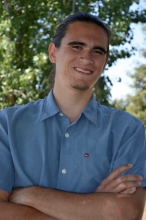 |
Major: Mechanical Engineering
Home City: North Fork, CA
Contact: tberner@ucmerced.edu
Faculty Mentor: Professor Yanbao Ma
|
Trenton Berner is a fourth year mechanical engineering major at UC Merced. Growing up in a small mountain town, he faced little opportunity in his academics and was influenced by corrupt lifestyles of alcohol and drug abuse at an early age. Education was not a priority for him until his second year of high school, when he grew tired of his bad decisions and watched his best friend drop out of high school. By making a change, Trenton was able to excel in his studies and found his passion for the sport of mountain biking. Instead of getting into trouble, he rode his mountain bike every day after class, becoming fascinated with the mechanical systems of his bike. He then decided to pursue a career in mechanical engineering. After three challenging years in community college he transferred into UC Merced. Trenton also became a volunteer instructor for the Merced County Office of Education, introducing science and engineering to elementary students. Recently, he traveled to multiple schools in the Merced and Madera counties, advocating education and working with students on engineering activities. He enjoys presenting the opportunities there are in education and motivating young students to go to college because without education he would not have achieved what he has today.
Thermal Management of Micro-/Nanoelectronics and Engergy Storage Systems
Trenton Berner, Ahmed Alami Merrouni, Angel Moran Sepulveda Junior II, Ebelin Hernandez, Juan Rodriguez, and Stephen Chan, Yanbao Ma, PhD; School of Engineering, University of California, Merced
Depleting sources of fossil fuels and high levels of air pollution increase the need for alternative clean energy. Electric vehicles (EVs) are environmentally friendly sources of transportation. They use the electricity stored in lithium ion batteries as fuel and they produce zero toxic emissions. However, the safety, performance and lifetime of lithium ion batteries are heavily dependent on their thermal management systems (TMSs). TMSs regulate the operation and storage temperatures of lithium ion cells, commonly through air cooling. Air cooling TMSs are cost-effective and compact systems, however, lithium ion cells degrade when their temperatures exceed 50 °C. This research involves designing and testing a cost-effective active liquid TMS, utilizing multichannel pipes to efficiently cool lithium ion battery cells while maintaining a compact mechanical structure. The design consists of four aluminum multichannel pipes connected to an aluminum pipe at each of the ends, having a parallel input and output for each cell, taking the shape of a latter. With the distribution of four multichannel pipes on the front and rear face of each cell, the temperature of the battery is expected to remain between 15 °C and 35 °C for optimum performance. Introduction of this affordable yet efficient TMS design that preserves the performance and lifetime of lithium ion cells will positively impact the EV industry.
David Cabral
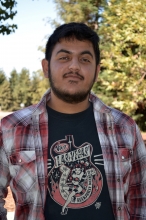 |
Major: Computer Science and Engineering
Home City:
Contact: dcabral6@ucmerced.edu
Faculty Mentor: Professor Marcelo Kallman
|
David Cabral is a rising third year in computer science and engineering and researches different effects that input data can have three dimensional graphic models. More specifically, find ways that users can interact with three-dimensional models using input data that would come from devices such as sensors. David has done volunteering at retirement homes and helped distribute food to people in need. A lot of reasons for David’s actions in life have occurred because of a near death experience from almost drowning in a river at a young age. This near death experience brought about a deep respect for life that’s still with him today. David’s friends and family have also had profound influence towards his actions. On his free time, David enjoys going to concerts and play basketball with his friends and conversing with family whenever the opportunity presents itself.
An Interactive and Programmable 3D Educational Presentation System
David Cabral, Renato Farias, MD, and Marcelo Kallmann, PhD; School of Engineering, University of California, Merced
The universe can be perplexing to contemplate over and having an interactive tool as a presentation for a solar system can help people gain a better idea of how planets can interact with each other. The presentation tool can be helpful for learning about basic planet interaction because of the it’s interactive capabilities; such as being able to put in your own solar system models to see what orbits can occur in that solar system. Presenting a solar system with orbiting planets was accomplished with the use of physics equations relating to orbits and utilizing transformation matrices to have the planets moving. Knowledge of transformation matrices and tools in OpenGL and Free Glut were used to build the code for the presentation tool. As my code for the presentation tool is finished, it could receive data in a certain format and it can output a presentation of a solar system. After a person is done conducting their own questions in the presentation tool, it can prove to be an effective learning tool on planet interaction by answering people’s questions on how planets can interact in certain scenarios.
Alexander Crosdale
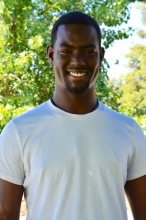 |
Major: Computer Science and Engineering
Home City: Concord, CA
Contact: acrosdale@ucmerced.edu
Faculty Mentor: Professor Florin Rusu
|
Alexander is a Junior at UC Merced studying Computer Science and Engineering. He expects to graduate in the Spring of 2017. Over the past year Alexander has increasingly become more proactive on campus by becoming a member of the association for computing machinery (ACM) in hopes of networking. He has also worked at MESA labs as a technical research assistant to gain technical knowledge and he is a founding father of the Pi Lambda Phi-CA alpha upsilon chapter in which he hopes to eliminate prejudice in society alongside like minded people. Career wise Alexander aspires to establish a successful tech firm and to continue traveling the world to continuously diversify his life experience. After college, Alexander plans to earn his master's in MBA at a reputable graduate school after which he plans to apply his knowledge in managing new and upcoming firms in order to build experiences and network.
Experimental Evaluation of MongoDB on the TPC-H Benchmark
Alexander Crosdale, and Florin Rusu, PhD; School of Engineering, University of California, Merced
Relational databases – once highly prized for their quering capabilities and transaction management – are now being supersede by a new paradigm, NoSQL (Not Only SQL), that targets their shortcomings of scalability and big data performance issues. The most popular NoSQL representatives are MongoDB and Cassandra, open-source projects with strong enterprise support. TPC-H (Transaction Processing Performance Council- Ad-hoc), the de facto decision support benchmark system for business analytics, was used to determine the viability of MongoDB. The TPC-H schema was mapped to the MongoDB schema- less representation and the 22 TPC-H queries are written in the MongoDB query language. Several configurations are investigated, both for schema representation as well as for the queries. For schema representation the configurations that were considered were a fully denormalized (embedded) model and a fully normalized (referenced) model. MongoDB was compared against Cassandra – the other popular NoSQL database – and SQLite, the most popular embedded relational database. The results reveal that using the denormalized model for mongoDB yielded greater flexibility in querying because the queries were ran against a single collection. MongoDB performed effectively with moderate amount of data, but as documents in the collection increased in size complications will arise.
Jorge De Haro
 |
Major: Mechanical Engineering
Home City: Livingston, CA
Contact: jdeharo@ucmerced.edu
Faculty Mentor: Professor Ashlie Martini
|
Jorge De Haro Silva is an incoming third year undergraduate student at the University of California, Merced. He expects to graduate in the Spring of 2018 with a Bachelor of Science degree in Mechanical Engineering. His research interests include tribology as well as renewable energy systems. This summer Jorge will be working with Dr. Ashlie Martini in the tribology lab studying the effects of various additives on the performance of oils. When he is not doing schoolwork, Jorge enjoys volunteering at local schools to inspire others to pursue STEM careers and college education in general. He is currently the Outreach Director of Ingenieros Unidos, the student chapter of the Society of Hispanic Professional Engineers at UC Merced, where he has the opportunity to influence the local community while improving his leadership and professional skills. As an immigrant from Mexico and the first of his family to attend college, Jorge wants to inspire his two younger brothers to pursue the opportunities available to them and follow their dreams. Outside of school, Jorge enjoys playing and watching soccer and traveling with friends.
The Effects of Additives on the Formation in Lubricating Oils
Jorge De Haro, and Shlie Martini, PhD; School of Engineering, University of California, Merced
The tendency of foam to develop within a lubricating oil leads to degraded lubricating properties and an overall increase in energy losses. In an effort to develop energy efficient mechanical and hydraulic systems, it is imperative to reduce the amount of foam which develops within a lubricating oil without dissipating other lubricating properties. Such lubricating oils must meet industry standards for foam and cleanliness and are formulated by mixing additives such as foam inhibitors, detergent inhibitors, and viscosity index improvers with a base oil in a custom-built blending station equipped with a light-based particle counter and a filter. Since the additives are seen as contaminants by the particle counter, the lubricant passes through the filter so that it meets stringent cleanliness standards. However, filtration removes additives, resulting in an increase in the tendency of foam development. To determine whether the filtered formulation meets foam standards, samples are pulled from the blending station at various filter passes. The samples are then foam tested, which includes pumping air into a measured amount of oil through a diffusing stone and measuring the height of the foam that forms as well as the time it takes for the foam to collapse. In order to meet both standards for different formulations of base oil and additives, different combinations of filter passes and weight percentages of the additive(s) are tested.
Jose Delgado
Jose Delgado plans to attend graduate school and pursue a PhD in Microbiology/Immunology. After graduate school, he plans to apply for postdoctoral fellowships to become a Clinical Microbiologist. As a Clinical Microbiologist he hopes to work in a clinic or hospitalal setting by efficiently identifying pathogenic microbes, providing clear diagnostics in patients, and conducting research to better diagnose and treat patients with microbial infections or disease.
Generation of Homozygous Deletion Strains of Select Genes in Candida albicans and Exploration of Their Roles in Response to Host Mucin
Jose Delgado, Megha Gulati, PhD, and Clarissa J. Nobile, PhD; School of Natural Sciences, University of California, Merced
C. albicans is a member of the normal human microbiota and resides asymptomatically at different mucosal surfaces in the body. A change in the microbiota, such as from the use of antibiotics, or by host immune compromisation, can allow C. albicans to proliferate and cause infection. One of the major virulence traits of C. albicans is its ability to form biofilms, dense communities of microorganisms that are adhered to a surface and are resistant to antimicrobial agents. All wet epithelial surfaces of the human body are lined with mucus, whose main glycoprotein is mucin. Host mucins are known to suppress filamentation and biofilm formation in C. albicans. We recently performed an RNA-seq experiment to compare the transcriptional profile of C. albicans in the presence and absence of mucin. Genes that were most highly upregulated or downregulated were selected as candidates for gene knockouts. As C. albicans is a diploid fungus, homozygous deletion strains are being generated to knockout both alleles of the gene of interest. The roles of these genes in response to mucin will be evaluated by growing the C. albicans mutant strains in the presence and absence of mucin. Further, these strains will be tested for their abilities to form biofilms and for virulence in animal models of infection. This work will provide the first mechanistic insight into how C. albicans responds to host mucin.
Jocelyne Fadiga
| |
Major: Chemistry-Mathematics
Home City:
Contact: jfadiga@ucmerced.edu
Faculty Mentor: Professor Patricia LiWang
|
Designing a Silk-based Sustained Release Delivery System for Small Molecule Anti HIV Drugs
Jocelyne Fadiga, Li Zhang, PhD, and Patricia LiWang, PhD; School of Natural Sciences, University of California, Merced
Over 28 million of people living with HIV in sub-Saharan Africa account for 66% of worldwide HIV infection. Several inhibitors synthesized show promise as microbicides, which can be topically applied by users to prevent sexual transmission of HIV. However, transport to tropical regions and adherence to therapy still constitute major drawbacks to constraining the disease progression. Strict and consistent adherence to antiretroviral therapy (ART) is critical for suppressing disease, improving quality of life and allowing patient survival. For many viral infections that cause serious and chronic diseases such as HIV infection, lack of adherence may lead to emergence of drug resistance in patients, loss of virologic control, and even death. It has recently been recognized that many people are not able to adhere to a strict daily regimen for prevention, necessitating the development of a sustained release strategy. We selected sunset yellow as a proxy for the Non Reverse Transcriptase Inhibitor (NRTI) Tenofovir, a FDA-approved inhibitor of the enzymatic action of HIV reverse transcriptase. Using this model, a silk-based system was developed to continually release the dye over the course of several days. Silk fibroin was extracted from silk cocoons, solubilized in LiBr and dialyzed. Aliquots of the silk solution were mixed with determined quantities of dye and water, plated on 24-well plates, lyophilized, water-vapor annealed for optimized periods of time and dried at 37°C.
Kesia Garibay
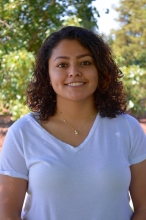 |
Major: Public Health
Home City: Stockton, CA
Contact: kgaribay@ucmerced.edu
Faculty Mentor: Professor Mariana Gonzalez
|
Kesia Garibay is a third year undergraduate student in Public Health and a minor in Management and does research on oral health among minorities and college students. She expects to graduate in the spring of 2018. She holds the position of president within the Public Health Society where she plans to outreach to the Merced Community by volunteering and giving back. Kesia enjoys hiking and kayaking with her family and friends. She loves to travel and explore new places.
Understanding Oral Health in Merced County
Kesia Garibay, and Mariaelena Gonzalez, PhD; School of Social Sciences, University of California, Merced
Oral health is a neglected Public Health concern, and poor oral health can affect one’s overall health, as research shows periodontal disease is linked to systemic diseases. Understanding oral health practices and access to care is particularly important in rural and minority communities, because these communities experience disproportionate exposure to oral health risk factors, and access to oral health-care is often limited. The purpose of this study was to examine oral health in Merced County. Preliminary results are presented here. 240 adult participants were recruited from 4 sites in Merced County. Participants were given a self-administered surveys containing questions on self-care, access to care, and oral health symptoms. The majority of the survey respondents were female, Latino, and had not receive a college degree. The majority of respondents reported brushing their teeth at least once a day, but reported they had not flossed more than twice in the last seven days. About 40% of the respondents had not been to the dentist within the last year, and 31.4% reported they had needed oral health care, but could not get it. 22% of the participants reported bleeding gums, and 13% reported current toothache pain. A significant amount of our sample reported early symptoms of gingivitis, tooth decay/sensitivity and a lack of access to care. Interventions regarding oral health preventative care and expansion of access to oral health care is needed in Merced County.
Juan Guerra
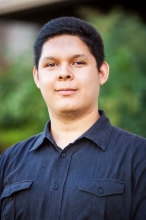 |
Major: Computer Science and Engineering
Home City:
Contact: jguerra2@ucmerced.edu
Faculty Mentor: Professor Jonathan Sprinkle
|
Tail-Light Tracking Algorithm
Juan Guerra, Guangyu Zhong, and Ming-Hsuan Yang, PhD; School of Engineering, University of California, Merced
Computer vision is becoming an essential field for modern technology, especially in the automotive industry; algorithms are being generated to detect objects, such as vehicles, and keep track of their movement. Our focus is to formulate an algorithm that can not only track a vehicle, but detect the tail- lights. The algorithm will then use this information to identify the specific locations of the brake and turn lights in that region and determine whether they are on or not. Development of this algorithm will decrease the response time of autonomous driving which can improve the reaction time of regular and emergency vehicles, increasing safety on the road. Preparing the algorithm requires data on frames that contain the cropped image of a vehicle with the coordinates and state of the brake and turn lights already calculated. By feeding the algorithm this information manually, it will have access to many instances in its database; this will allow it to use the references to compute the regions of the rear lights of new vehicles. Through calculations and testing, we demonstrate the accuracy of our algorithm and show how precise it can detect the required regions.
Benjamin Juarez
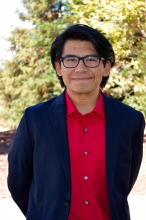 |
Major: Biological Sciences
Home City:
Contact: bjuarez4@ucmerced.edu
Faculty Mentor: Professor Suzanne Sindi
|
An Analysis of the Global Population Genetics of Malaria Resistance
Benjamin Juarez, Mario Banuelos, and Suzanne S. Sindi, PhD; School of Natural Sciences, University of California, Merced
The World Health Organization reports that 3.2 billion people in 95 countries are at risk of being infected with malaria. With nearly 1 million deaths per year worldwide, malaria represents one of the deadliest infectious diseases. Because malaria first infected humans thousands of years ago, genetic mutations providing natural resistance to malaria have been under positive selection. Prior studies of genes promoting resistance to malaria analyzed only targeted populations experiencing malaria in the present. However, such studies may miss beneficial mutations carried by individuals who today live in areas where malaria infections are rare. We take a global-approach by studying a large collection of whole-genome sequencing data (the 1000 Genomes project) to look for past signals of malaria resistance. In this study, we focus on five gene locations linked to malaria resistance: HBB, ABO, ATP2B4, G6PD, CD40LG. We use SamTools and the human reference genome to report on the global nucleotide diversity of these target genes. In the future, we plan to extend our studies to the complete set of over 20 genes known to confer resistance to malaria. Understanding the complete genetic diversity of genes associated with malaria resistance will provide valuable information towards developing therapeutic targets to this important infectious disease.
Kyle Kabasares
Eric Lee
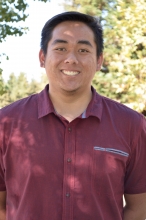 |
Major: Biological Sciences
Home City: Stockton, CA
Contact: elee97@ucmerced.edu
Faculty Mentor: Professor Jennifer Manilay
|
Eric Lee is the youngest out of five siblings and will be the first male in his family to obtain a bachelor’s degree. He is currently a junior majoring in human biology and is collaborating with Professor Jennifer O. Manilay to analyze natural killer (NK) cells in sclerostin domain-containing protein 1 (SOSTDC1) knockout mice. Aside from conducting research, Eric is also a member of the UC Merced Hmong Student Association. Eric also enjoys volunteering and providing comfort to patients during their stay in the emergency room at Merced’s Mercy Medical Center. After graduating, he is determined to attend graduate school and serve as a role model and mentor for aspiring young teenagers who are underrepresented and interested in pursuing a higher education in the STEM field.
Identifying NK Cell Development by Sostdc1 Expression in a Cell Microenvironment or Cell Intrinsic Manner
Eric Lee, Albert Millan-Hernandez, Gabriela G. Loots, PhD, and Jennifer O. Manilay, PhD; School of Natural Sciences, University of California, Merced
In the immune system, natural killer (NK) cells survey the environment for elimination of viruses and transformed cells. Preliminary data from our laboratory shows that sclerostin domain containing 1 (Sostdc1) is expressed in some rare cell types of the bone and bone marrow. Sostdc1 has been shown to control bone morphogenetic protein and canonical Wnt signaling pathways in mesenchymal stem cells. Furthermore, we have linked a bone development protein to the immune system, as we have data showing that NK cells are decreased in Sostdc1 knockout (KO) mice. We hypothesize that Sostdc1 plays a role in NK cell development through maturation. To test our hypothesis we will utilize bone marrow transplants to make chimeras using Sostdc1-KO and wild type (WT) mice to identify whether Sostdc1 regulates NK cell maturation intrinsically or in a microenvironment. Flow cytometry will be used to examine the expression levels of NK receptors between wild type (WT) and Sostdc1-KO mice. Together, we discovered that the microenvironment chimeras show a significant decrease in expression of NK cell markers, suggesting that the microenvironment acts in a similar pattern as seen in the Sostdc1-KO chimeras. We can suggest that the NK cell microenvironment is affecting NK cell development. Further molecular analysis will help provide a better mechanistic understanding of how Sostdc1 affects NK cells. This analyses will provide novel information on how regulation of Sostdc1 might be utilized to improve cancer immunotherapy.
Armando Leon
 |
Major: Computer Science and Engineering
Home City: Beaumont, CA
Contact: aleon45@ucmerced.edu
Faculty Mentor: Professor Alberto Cerpa
|
Armando Leon is a third year undergraduate student who studies Computer Science and Engineering at the University of California, Merced and his research consists of developing a software that connects to a database and displays the information collected by sensors that read the temperature in a room. He is a first generation college student and is planning to graduate in the Spring of 2019. Armando is also an active member of the on campus professional organization Ingenieros Unidos (IU) and is affiliated with the national professional organization the Society of Hispanic Professional Engineers (SHPE). Along with IU and SHPE, he practices what they call the five pillars: outreach (community service), academics, networking, professionalism, and the most important pillar is familia. With Ingenieros Unidos, he visits Le Grand High School and helps encourage students to take an educational path towards their success and inspires students to have an interest in the STEM field by having them engaged in engineering projects such as marshmallow cannons. He also tutors and mentors his fellow members to help them with their academics. Armando enjoys attending professional conferences and utilizes his networking and professional skills that he has learned from his mentors in Ingenieros Unidos. He also enjoys spending time with his IU familia, whom are part of his motivation to put all of his effort into his academics and to inspire others to work hard.
A Testbed for Wireless Sensor Networks Within a Building
Armando Leon, Alex Beltran, and Alberto E. Cerpa, PhD; School of Engineering, University of California, Merced
According to the United Nations and Environment Programme, buildings use 40% of the world’s energy and of that energy 50% of it goes to heating, ventilation, and air conditioning. Data provided by wireless sensor networks has contributed to lowering energy expenditures by controlling the building more efficient, e.g. only conditioning a room when a room is occupied. However, some difficulty may arise in maintaining a wireless sensor network within a building due to sensors being miscalibrated, breaking, returning erroneous data, or ceasing to function. Invalid or unreliable data could lead to incorrect results and discomfort in research participants. For these reasons, it is essential to develop a testbed to detect these faults and trace their cause. In this poster, we present an architecture for wireless sensor testbed for buildings to detect faults, analyze energy usage, and serve as a tool for researchers who want to explore different control algorithms.
Edgar Mejia
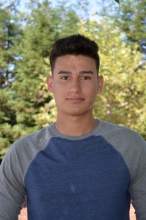 |
Major: Mechanical Engineering
Home City: Livingston, CA
Contact: mejiaedgar12@yahoo.com
Faculty Mentor: Professor Po-Ya Abel Chuang
|
Edgar Mejia is a fourth year student attending undergraduate school at UC Merced. He is majoring in Mechanical Engineering with a minor in applied mathematics and is planning to conduct research on Proton Electrolyte Membrane fuel cells, specifically on renewable power systems mainly involving electrolyzers, fuel cells, and solar panels. Edgar will be graduating in the spring of 2017 and is considering going into graduate school. Throughout his time studying at UC Merced, Edgar has been on the Dean’s list for two semesters and hopes to accomplish achieving a spot in the chancellors list. By forming part of the UROC CAMP program, Edgar hopes to acquire a sufficient amount of experience to be able to make a positive impact towards the community in the near future as a mechanical engineer. Edgar also enjoys going snowboarding and planning random trips with friends.
Solar Hydrogen Regenerative Cell Phone Charging Station
Edgar Mejia, Felipe Mojica, Marek Abarca, Derek Brigham, Johnny Nguyen, Po-Ya A. Chuang, PhD; School of Engineering, University of California, Merced
Producing free energy to meet the demands of our modern world is a major issue that our society continuously confronts. The wanted outcome of this research is to produce a zero emissions cell phone charge station producing 2.5 Watts of available energy throughout a twenty-four-hour period. The system’s main components consist of a proton exchange membrane fuel cell (PEMFC), an array of photovoltaic panels (PV panels), for power production, and an electrolysis cell for hydrogen and oxygen gas production. A gravity-assisted storage tank was utilized to store the gases produced. Alongside these components are various auxiliary components which were employed to support the above systems and allow minimal intervention on behalf of the user. The key components, using standard performance measures for each, were tested individually to ensure that they could meet their respective demands in the system. Finally, the system was tested as a whole for its capability to charge a cell phone at any time of the day. The result of our research and design work showed that during day time the system provided to a cell phone a maximum of 2.5 Watts, but during night time it only produced 2.0 Watts, which is still sufficient enough to charge a cell phone. The electrolysis cell produced on average, 1.11 mL/hour. These findings show that power production in the night time should be improved and the electrolysis cell performance can be alternatively optimized. Altogether, this system demonstrates how a renewable power system can be implemented on small scale applications.
Christian Montes
Asmaa Mohamed
Understanding the Bone Cell Niche in Sclerostin Knockout Mice
Asmaa Mohamed, Gabriela G. Loots, PhD. and Jennifer O. Manilay, PhD.;School of Natural Sciences, University of California, Merced
Sclerostin (SOST) is a protein secreted by osteocytes to prevent the maturation of osteoblasts into osteocytes. It is recognized that SOST is a candidate regulator of hematopoietic stem cell (HSC) fate in the mouse. However, the role of SOST and the molecular mechanisms that mediate the crosstalk between HSCs and the different bone marrow niche cells is incompletely understood. Previous data from our laboratory showed that SOST knockout (KO) mice had a higher bone mass and smaller bone marrow cavity and fewer CD45+ hematopoietic cells in the bone marrow compared to wild type controls. Paradoxically, our preliminary data indicate that HSCs in SOST-KO bones may be more proliferative than controls. Our goal is to understand the molecular mechanisms that regulate HSC proliferation in SOST-KO mice. We hypothesize that specific bone “niche cells” control HSC proliferation. To test this hypothesis, we need to optimize our bone niche cell isolation protocol in order to collect endothelial cells, osteoblasts, and mesenchymal stem cells from whole bones. Optimization of this protocol will allow us to then perform functional HSC-niche cell co-culture assays, as well as analysis of gene expression in the specific bone niche cells. The results of these studies could identify the specific niche cell in the bone that induces HSC proliferation, which could have applications for hematological diseases and immunity.
Alberto Navarro
The Development of a Well-Defined Homogeneous Transition Metal Catalyst for Tetrahydroxydiboron-Mediated Alkene and Alkyne Transfer Hydrogenations Using Water
Alberto Navarro Brito, Steven P. Cummings, Benjamin J. Stokes, PhD; School of Natural Sciences, University of California, Merced
We recently described a method to reduce unsaturated C–C bonds by transferring H atoms from water using tetrahydroxydiboron as an additive and Pd/C as a catalyst. The heterogeneous nature of Pd/C makes experimental investigations of the hypothetical catalytic cycle of this reaction difficult. Below, we describe our efforts to develop a well-defined homogeneous transition metal catalyst for the water/ tetrahydroxydiboron H atom transfer system, using unactivated alkynes and alkenes as model substrates. The bulk of our method development focused on tertiary phosphines and solvent selection for a homogenous palladium catalyst. The more nucleophilic phosphine ligands were more effective at promoting hydrogenation. Semi-hydrogenation for alkenes was also realized by proper solvent selection affording good chemoselectivity with minimal over reduction. Excitingly, we are seeing unexpected E:Z stereoselectivity contrasting our homogenous catalyst with standard semihydrogenation catalysts.
Lacey O'dell
 |
Major: Biological Sciences
Home City:
Contact: lodell2@ucmerced.edu
Faculty Mentor: Professor Nestor Oviedo
|
DNA Damage: A Precursor to Cancer Progression
Lacey O'dell, Paul G. Bargouth, and nester Oviedo, PhD; School of Natural Sciences, University of California, Merced
Stem cells have the ability to divide and differentiate into specialized cells that repair damaged and aged tissues. One of the main focal points of cancer research today involves understanding the mechanisms surrounding stem cell regulation and function, however, the process of abnormal cellular transformation is still poorly understood. Identifying the early stages of the cellular transformation seen in cancer, as well as the key events driving this process, could give insight into the earliest stages of cancer development. In this study, a novel approach and a model organism, the planaria flatworm Schmidtea Mediterranea, were used to identify the earliest possible event in the cascade that leads to abnormal proliferation/cancer. The deletion of the tumor suppressor gene PTEN enabled us to study the connection between DNA damage and hyper proliferation, the hallmark of all cancer cells. We have Identified DNA damage as a precursor to cancer development and an early event driving the cellular transformation process. Future experiments utilizing the deletion of the PTEN gene could reveal new target genes that play a critical role in the process enabling abnormal cell proliferation.
Harpreet Randhawa
The Role of the Mushroom body on Ethanol Reward Behavior
Harpreet Randhawa, Greg Engel, PhD and Fred Wolf, PhD; School of Natural Sciences, University of California, Merced
The mushroom body is believed to be the main site of olfactory learning and association in insects such as Drosophila Melanogaster. In particular, it is involved with the behaviors of these organisms when they are exposed to ethanol. We find that by changing the expression of genes within these brain structures, through use of UAS/Gal4 drivers, flies exhibit changes in their patterns of sedation and tolerance when exposed to ethanol. Further testing with different combinations of UAS and Gal4 drivers can be used to determine the genes of the mushroom bodies that are important in the process of ethanol behavior, which can help to further understand how alcohol works in the brain to lead towards addiction that many people experience today.
Juan Rodriguez
Thermal Management Design for High Power Lithium-ion Battery by Minichannel Aluminum Tubes
Juan Rodriguez, Ebelin Hernandez, Stephen Chang, Angel Sepulveda, Trenton Berner and Yanbao Ma, PhD; School of Engineering, University of California, Merced
Lithium-ion batteries are a common power source for most Electric Vehicles (EVs) since they provide a high energy capacity. The challenge at hand is to provide a stable temperature at which the battery can operate at optimum levels. Thus, providing a Thermal Management System is critical for the longevity, performance, and safety of the batteries. This research presents a novel design in which aluminum minichannel tubes are used and placed in parallel. An inlet and outlet are also in place at the bottom of the cell which circulates a liquid coolant through the pipe system, which then cools the cell itself. It was noted that cooling performance is also attributed to inlet orientation. As long as the orientation of the inlets remained on one side of the battery, the cooling performance would reach optimum levels. The number of aluminum mini channels used can vary, but as the research indicates, the more mini channels that are in place, the better the cooling performance. However, the main idea of the design is to ensure full thermal contact of the cell with the aluminum tubes as well as keeping the design compact and light. Therefore, the design being considered will not only help achieve the stable environment we wish to demonstrate, but also present a compact and cost effective product.
Sebastian Rodriguez
My name is Sebastian Rodriguez. I am a fifth year applied mathematics and computer science double major focusing on data science and machine learning research with Dr. Harish Bhat. Our research focuses on statistical forecasting of NBA games. My continued work in data science has encouraged me to pursue a PhD in this field. As a native Costa Rican, my long term goals involve bringing the data science skills I have learned to Central America for public health research. In my free time, I enjoy reading, watching movies, and playing racquet sports.
Using Play-by-Play Data to Model, Simulate, and Predict NBA Games
Sebastian Rodriguez, Li-Hsuan Huang, Harish Bhat, PhD; School of Natural Sciences, University of California, Merced
Using play-by-play data from all 2015-16 regular season NBA games, we build generative models for substitutions of five-player lineups. This model differs from typical models in that we consider team lineups instead of players since we believe this encapsulates the synergy between the players on the court and their additive performance. The substitution model consists of a continuous-time semi-Markov chain, with both holding time distribution and transition rates inferred from data. We compare our inferred model to readily available Markov models in the R programming language's CRAN repository. Combining the substitution model with a model for how a particular group of players contributes offensively and defensively as a function of seconds played (a plus/minus rate model), we use the Gibbs Monte Carlo method to sample from our stochastic substitution model and simulate plausible game trajectories to predict outcomes of games. We create and compare different linear regression techniques for constructing the plus/minus rate model. We quantify the predictive power of our model, comparing out-of-sample predictions with actual results for both regular season and playoff games. By running simulations with and without an injured player, we show how the substitution model helps answer "what if" questions and measure impacts of injuries on the winners of games and series.
Esteban Sandoval Jr.
 |
Major: Biological Sciences
Home City: Sacramento, CA
Contact: esandoval8@ucmerced.edu
Faculty Mentor: Professor Rudy Ortiz
|
Esteban Sandoval Jr is a fourth year undergraduate student at UC Merced majoring in Biological Sciences with an emphasis on human biology. Last summer he had the honors to attend the Summer Medical and Dental Education Program to become familiar with problem based learning when it comes to diagnosing and to have a thorough understanding on health disparities to reduce them. Esteban is looking forward to develop new critical thinking and problem solving skills while working on a research project in Dr. Rudy Ortiz’s laboratory. He wants to use these achievements to reach his dream in attending medical school and becoming a physician to serve underserved communities. Esteban enjoys learning about the different cultures and ethnicities around the world as well as trying new cuisine. He has a passion for dancing salsa, bachata, merengue, and many other Latin based dances. His other passion includes listening to a variety of music that include rock, metal, Latin mixes, and especially the art in Hip-Hop. His parents came into the United States and settled in a small community named Oak Park in Sacramento, CA. Esteban, along with his older sister, will be the first generation in his family to attend and graduate college.
Total Protein Concentration Shows Decreased Levels of Creatinine in Insulin Resistant OLETF Rat
Esteban Sandoval, Max Thorwald, Ruben Rodriguez, Rudy Ortiz, PhD; School of Natural Sciences, University of California, Merced
Creatinine is a chemical waste that comes from muscle metabolism. 2% of creatine is metabolized into creatinine waste and travels down the bloodstream to kidneys to be excreted into the urine everyday. Abnormal creatinine to protein/albumin concentration in the urine indicates signs of kidney disease or impaired functions. It is hypothesized to have lower ratio of creatinine to protein when an organism is insulin resistant because of the heavy blood filtration of the kidneys. To test this hypothesis, four groups of rats were studied (n=6-8/group) 1) 1) Long-Evans Tokushima Otsuka (LETO; control) normal diet (ND), 2) Insulin Resistant Otsuka Long-Evans Tokushima Fatty) OLETF ND, 3) OLETF ARB, and 4) OLETF – ARB. Each had 30 minutes of ischemia on the right kidney and reperfusion of 6 hours. During reperfusion, urine was collected every hour for three hours then total protein concentration was measured. It is expected that the insulin resistant OLETF group will have the lowest creatinine to protein concentration because of the stress the kidneys have from heavy filtration of blood from the high levels of glucose. Measuring the ratio of creatinine to total protein concentration can prevent kidney malfunction and damage.
Brenda Yu
 |
Major: Biological Sciences
Home City: Merced, CA
Contact: byu24@ucmerced.edu
Faculty Mentor: Professor Mark Sistrom
|
Brenda Yu is a first year undergraduate student at UC Merced who is pursuing degrees in Biological Sciences and Psychology, as well as minors in Chemical Sciences and Community Research and Service. Currently, she is researching the antimicrobial properties of gecko skin in the Sistrom Lab, in hopes of discovering a new compound that could potentially combat antibiotic resistant bacteria. She plans to focus her research on Biomedical and biotechnology studies on her journey to becoming a medical scientist. Besides her scientific endeavors, she enjoys programming events and concerts as part of the Campus Activities Board and is also a Student Involvement and Transitional Programs Intern within the Office of Student Life. In addition to her various projects, Brenda is working passionately towards providing resources to the Merced community to help prepare the next generation for future leadership roles, on top of connecting with and encouraging young women to pursue STEM fields and higher education. During her free time, she enjoys cooking, listening to music, and reading about the Marvel Universe.
Screening of Antimicrobial Properties of Gecko Skin on Common Pathogenic Antibiotic-resistant Bacteria
Brenda Yu, Jeremy S. Mak, and Mark J. Sistrom, PhD; School of Natural Sciences, University of California, Merced
Various species of tropical geckos slough large portions of their skin as a defense mechanism against predators and are able to persist with large dermal breaks without contracting infections, suggesting the presence of antimicrobial properties on the epithelium. With the prevalence and rise in antibiotic-resistant bacteria, it is necessary to investigate potential new compounds for antimicrobial treatments. We hypothesized that the presence of antimicrobial properties exists on the epithelium of two gecko species, Phelsuma madagascariensis grandis and Gehyra vorax, that are able to prevent the growth of antibiotic- resistant bacteria. Homogenized skin was screened for antimicrobial activity against two known pathogenic bacteria that have developed antibiotic resistance: methicillin-resistant Staphylococcus aureus and carbapenem-resistant Enterobacteriaceae. Experiments were conducted to determine the effectiveness of the skin samples against the different species of bacteria. The data generated will provide a basis to fractionate the homogenized lizard epithelium, determine the identity of any compounds displaying antimicrobial properties, and ultimately, their utility for use as treatments for infections in patients.
